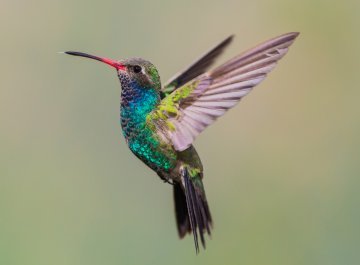
Over four hundred species of hummingbirds
have been identified in North and South
America, forming the Western Hemisphere’s
second largest family of birds.
These exceptionally small birds have
the greatest comparative energy output
of any warm-blooded animal. In
one day, they often consume more
than half their total weight in food
and twice their weight in water. The
smaller species have the fastest wing
beat of all birds. Unlike other birds,
their wing upstroke is as powerful as
their downstroke. They can fly forward,
backward, and briefly, upside
down.
The range of the hummingbird
stretches from Alaska to Tierra del
Fuego, Chile. Because of a constant
supply of nectar and insects, tropical hummingbirds
rarely migrate. Those hummingbirds that
do migrate sometimes travel enormous distances.
The rufous hummingbird flies over two thousand
miles fromits winterhomein Mexico to the Pacific
Northwest and Alaska.
Physical Characteristics of Hummingbirds
Hummingbirds are extremely small, weighing
from two to twenty grams. The bee hummingbird
is the world’s smallest bird. Their long, slender
bills, which are often slightly decurved, and their
long bitubular tongues give them easy access to
flower nectar, their main source of food.
Although their feather structure is among the
most specialized of birds, hummingbirds have the
fewest feathers. The primary flight feathers decrease
in size from the outer feathers inward toward
the secondary feathers. Hummingbirds are
able to rotate each of their wings in a circle. To
hover, they move forward and backward in a repeated
figure eight. They can move in any direction
instantaneously. Their feet, which are more
suited for perching than walking, have three toes
directed forward and one pointed back.
Hummingbird feathers are iridescent. Depending
on the viewing angle, the colors will
change from red to gold or from green to turquoise.
Adult males have the most intensely colored
feathers and in full sunlight seem to glow.
Some feathers are also modified to produce
sound, so that as the birds fly, a soft humming
sound is heard.
Reproductive Biology and Behavior
Hormonal changes prompt the female hummingbirds
to begin nest building as ova ripen in their
ovaries. In the male, hormonal changes enlarge
their testes to many times their normal weight.
Following mating, the female takes from one day
to two weeks to complete building her nest, and
soon after, she lays her eggs. Most hummingbirds
lay two eggs, two days apart. The tiny, elliptical
white eggs weigh less than 0.02 ounce. Depending
on the species, incubation lasts fifteen to twenty
days. Newly hatched hummers are featherless
and do not open their eyes for two weeks. By two
and a half weeks they are covered with feathers
and can groom themselves. After testing their
wings, at three weeks they are able to leave the
nest, although the mother continues feeding them
for two to four more weeks.
Hummingbirds are highly territorial. Particularly
when they are migrating, they aggressively
protect their sources of nectar. A nesting female
will attack any interloper approaching her nest.
Hummingbirds have adapted to living in diverse
areas. Like most birds, hummingbirds eat
vast quantities of food. They have taste receptors
on their tongues and salivary glands, and prefer
flower nectars with a high sugar content. Throughout
the day, hummingbirds eat frequently. At
night, in order to conserve energy, they enter a
state of torpor, which is a short-term form of hibernation.
In this state they are unable to flee from
predators. To resume a normal state requires
enough energy to warm their organs and tissues.
The birds need to monitor their energy reserves so
they can recover from their torpid state.
Hummingbird Facts
Classification:
Kingdom: Animalia
Phylum: Chordata
Class: Aves
Order: Trochiliformes
Family: Trochilidae (hummingbirds, sixty-two
genera, eighty-eight species)
Geographical location: North and South America,
with most living near the equator
Habitat: Wooded areas, mountain slopes, plateaus,
canyons, often near water
Gestational period: Usually one breeding cycle
in a year
Life span: Average is five years, though observations
of banded and captive birds show they
can live ten or more years
Special anatomy: Ten primary flight feathers; six
to ten secondary wing feathers; ten rectrices;
extremely large sternums; long bills, often
decurved
Other popular Animals
Photo Gallery of - Hummingbird
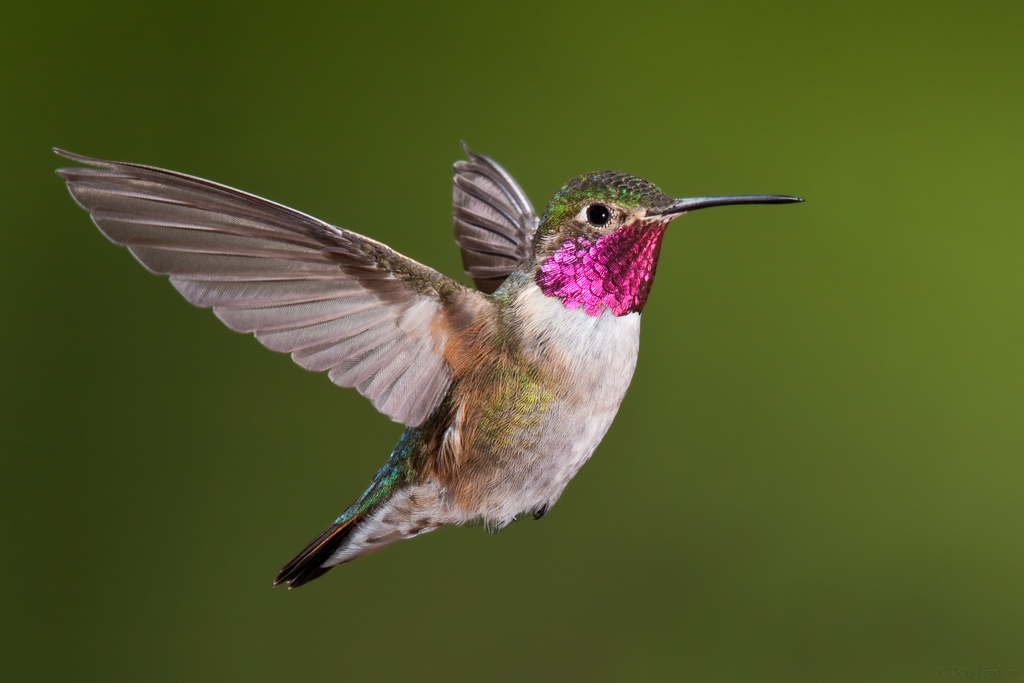
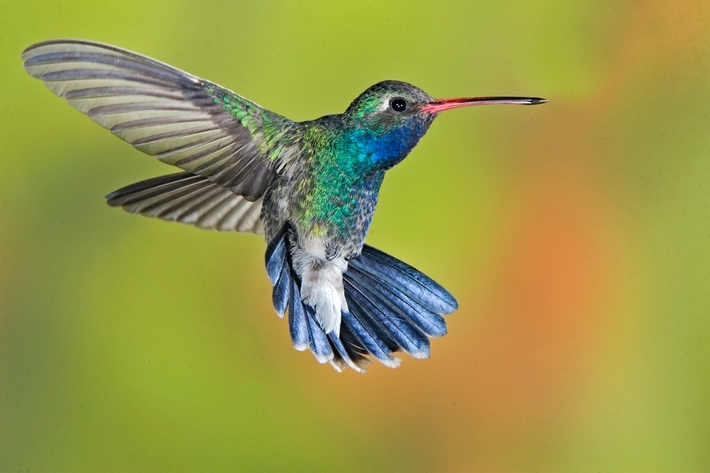
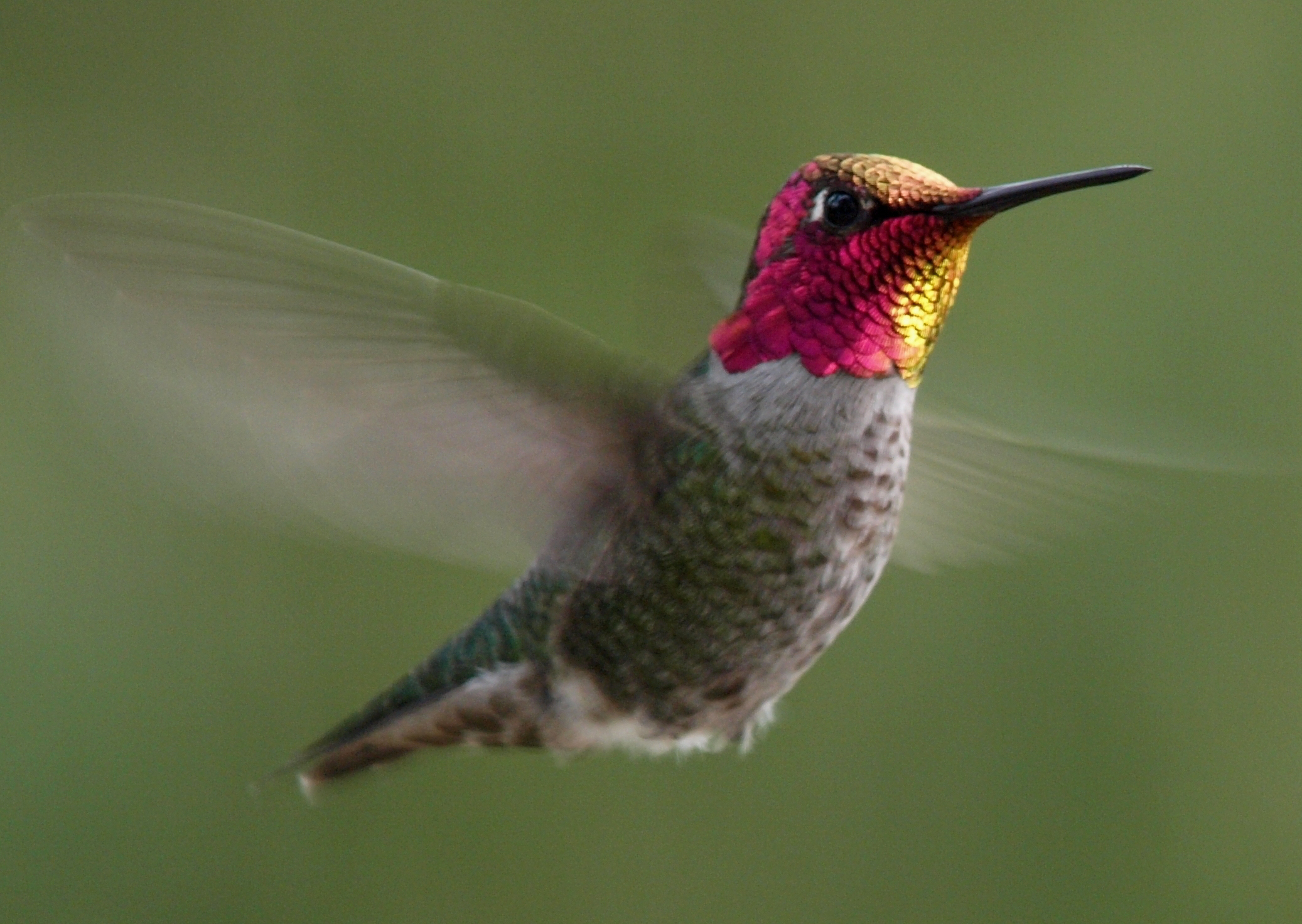

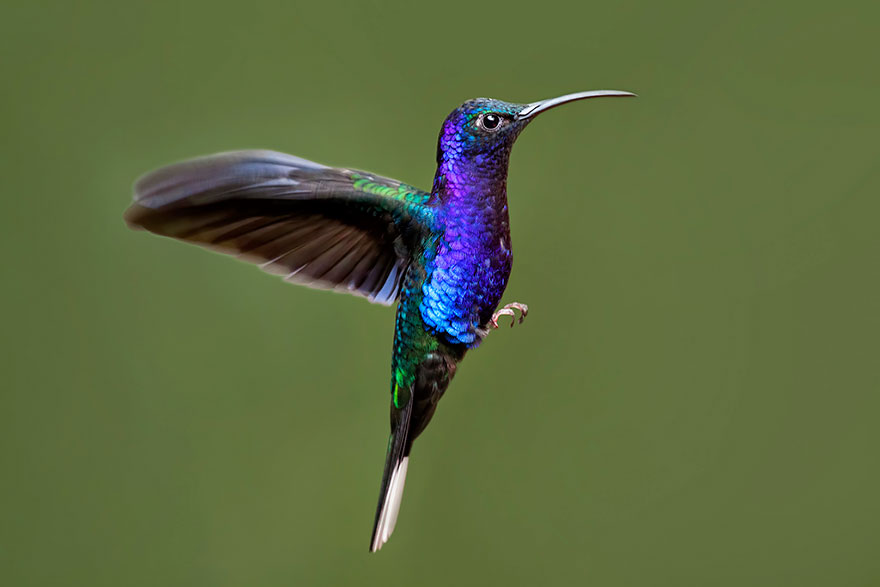



 Animalia Life
Animalia Life